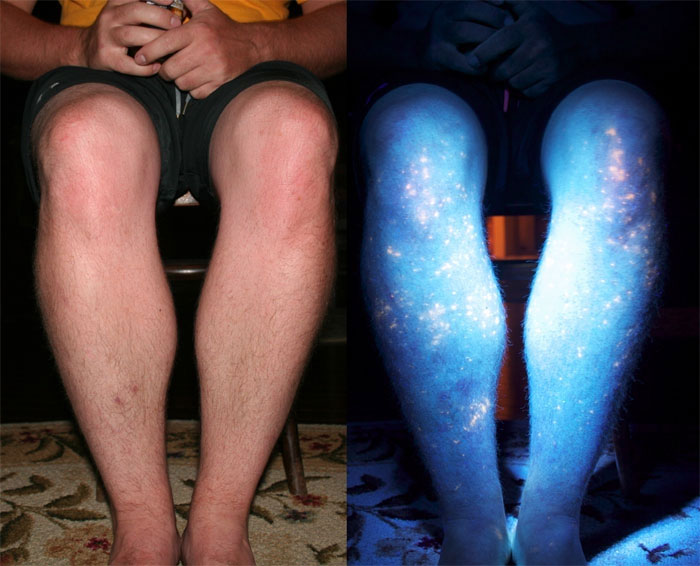Serious poisoning because of seawater containing oil spills
BP's oil spill beaches now look cleaner, but scientists' research indicates another truth.
BP used Corexit solvents to disperse oil spills from the Deepwater Horizon oil rig on the Gulf of Mexico.

Poison into the skin is only detected by ultraviolet light. (Source: Discovery)
Corexite combines with oil to form tar (asphalt). This material does not disappear as expected. This solvent is preventing bacteria from hydrocarbon decay in crude oil.
And while standing on beaches that are hard to observe, toxins in this compound are absorbed through wet skin faster than dry skin. The only way to detect is using ultraviolet light.
This is also the way scientists at the University of South Florida conduct research.
The water samples he collected contained organic PAH pollutants with higher levels than can cause cancer. PAHs are present on surface water at the shoreline and mud so they can contaminate groundwater.
'It is necessary to stop using Corexit to disperse oil at sea. The consequences of Coreite have not been known for a long time and its impact on the Gulf of Mexico environment is more terrible than we thought, "the study concluded.
- Can human hair be used to clean oil spills?
- The risk of food poisoning increases because the ocean is warmer
- Measures to handle when food poisoning at home
- What to eat when suffering from food poisoning
- Vietnam can search for the culprit causing oil spill on the sea
- How to deal with drug poisoning
- Be careful with hot day food poisoning
- Study bacteria eating oil and gas in oil spills
- Symptoms of mercury poisoning and how to prevent it
- Causes of lead poisoning and latent mercury at home
- The consequences of marine pollution due to oil spill
- How to purify fresh water from seawater is simple, cheap and without electricity
 Green tea cleans teeth better than mouthwash?
Green tea cleans teeth better than mouthwash? Death kiss: This is why you should not let anyone kiss your baby's lips
Death kiss: This is why you should not let anyone kiss your baby's lips What is salmonellosis?
What is salmonellosis? Caution should be exercised when using aloe vera through eating and drinking
Caution should be exercised when using aloe vera through eating and drinking